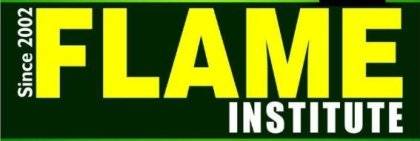PUNJAB AGRI EXPORT CORPORATION (50)
PUNJAB STATE CONTAINER AND WAREHOUSING CORPORATION (51)
Computer Knowledge – Basic General Computer Awareness What is a Computer? Computer: A Computer is a General-purpose machine, commonly consisting of digital circuitry, that accepts (inputs), stores, manipulates, and generates (outputs) data as numbers, text, graphics, voice, video files, or …
Cyclic And Non Cyclic Photophosphorylation We all are well aware of the complete process of photosynthesis. Yes, it is the biological process of converting light energy into chemical energy. In this process, light energy is captured and used for converting …
Photosynthesis is a process by which phototrophs convert light energy into chemical energy, which is later used to fuel cellular activities. The chemical energy is stored in the form of sugars, which are created from water and carbon dioxide. Photosynthesis …
“Transportation is the process that involves the movement of water and necessary nutrients to all parts of the plant for its survival. “ Transportation is a vital process in plants. Trees transport all the nutrients and water it needs for survival …
Plants are an essential part of the ecosystem. Every life on the earth is directly or indirectly dependent on plants. Among the different parts of a plant, the leaf is the most essential. Primarily, leaves have two functions: photosynthesis and …
What is a Stem? The stem is the ascending part of the axis bearing branches, leaves, flowers and fruits. It develops from the plumule of the embryo of a germinating seed. It bears nodes and internodes. What are nodes and internodes? The regions …
Modifications of Stem The stem helps in providing structure and support to the plant. It is modified into three important types: Underground Modifications Sub-aerial Modifications Aerial Modifications Underground Modifications of Stem Some underground stems are modified for food storage and …
The root is an underground part of the plant that absorbs water and minerals from the soil and anchors the plant firmly. In some plants, the roots change their shape and get modified to absorb and transport water and minerals …
Morphology is the name given to the science that deals with the study of the form and structure of things. No matter which plant you take, the morphology of a flowering plant includes the roots, stem, leaves, flowers, and fruits. …
Racemose is a type of an inflorescence where the main axis continues to grow indefinitely and does not terminate in flower. This is why it is also known as an indefinite or indeterminate inflorescence. The main characteristics are: Growth of the …
Inflorescence The pattern of flower arrangement on the floral axis is known as inflorescence. Inflorescence is divided into two main types: Racemose: In racemose types of inflorescence, the main axis grows continuously and flowers are present laterally on the floral axis. …
In this article we will discuss about:- 1. Definition of Botanical Garden 2. Functions of Botanical Gardens 3. History. Definition of Botanical Garden: The garden is generally defined as a place for growing flowers, fruits or vegetables. But botanic or botanical garden …
@ Natural selection @ can take many forms. To make talking about this easier, we will consider the distribution of traits across a population in graphical form. In we see the normal bell curve of trait distribution. For example, if …
# What do you understand by natural selection? Give examples. Natural selection is an important mechanism of evolution. It states that the organisms that are able to survive and reproduce with the changing environmental conditions are selected by nature while …
# Genetics and Evolution Notes # Genetics Genetics is the branch of science that deals with the study of genes, genetic variations and heredity in organisms. Genes are made up of DNA and are a type of genetic instruction. These …
The Modern Synthetic Theory of Evolution describes the evolution of life in terms of genetic changes occurring in the population that leads to the formation of new species. It also describes the genetic population or Mendelian population, gene pool and …
@# Charles Darwin, an English naturalist of the 19th century made an extensive study of nature for over 20 years. He collected the observations on animal distribution and the relationship between the living and extinct animals and finally found that …
## How Does Molecular Genetics Support Evolution? Genetics is one of the key aspects of evolution, and evolution is an ongoing process. The entire theory is supported with adequate genetic evidence to evolution. It is believed that we have descended …
@ Comparative anatomy @ is a study of the differences and similarities in the anatomy of two species. In general, it includes a comparison of body structures of two species. It is similar to phylogeny and evolutionary biology. Evolution is …
## What is Evolution? Evolution mainly deals with the origin of life on earth. The conditions and the forms of life on earth were entirely different from what we see today. Everything evolved from one form to another for a …
“DNA fingerprinting is a technique that shows the genetic makeup of living things. It is a method of finding the difference between the satellite DNA regions in the genome.” What is DNA Fingerprinting? Satellite DNA regions are stretches of repetitive …
Genomics Genomics is the study of a person’s genes, and its interaction with each other and the environment. It involves a combination of recombinant DNA, DNA sequencing methods, and bioinformatics to sequence, assemble, and analyse the structure and function of …
“Gene regulation can be defined as any kind of alteration in the gene to give rise to a different expression which might result in a change in the synthesized amino acid sequence.” Gene expression is basically the synthesis of the …
Genes A gene is a part of DNA that codes for a particular protein. DNA is the information database of the cell and exists within the cell nucleus. It carries all the important genetic instructions that produce proteins required by our …
The central dogma describes how the DNA makes its own copies by DNA replication, then codes for the RNA by means of a transcription and RNA codes for the proteins by translation. For the creation of a new generation, the …
The discovery of DNA was one of the most significant findings in the field of science. Today, deeper insight into the DNA structure has unravelled answers to questions that have been around for eons. The Central dogma explains how the …
Is it always DNA to RNA to proteins? The central dogma of molecular biology. Coined by Francis Crick. And in his own words, “I called this idea the central dogma, for two reasons, I suspect. I had already used the obvious …
The only way to make new cells is by the division of pre-existing cells. This means that all organisms depend on cell division for their continued existence. DNA, as you know, carries the genetic information that each cell needs. Each …
DNA packaging is an important process in living cells. Without it, a cell is not able to accommodate the large amount of DNA that is stored inside. Learning Objectives Describe how DNA is packaged differently in prokaryotes and eukaryotes Key …
The Double Helix DNA (deoxyribonucleic acid) and RNA (ribonucleic acid) are composed of two different classes of nitrogen-containing bases: the purines and pyrimidines. The most commonly occurring purines in DNA are adenine and guanine: Figure 1.2.1: Purines The most commonly occurring pyrimidines in DNA are cytosine and thymine: Figure 1.2.2: Pyramidines …
Even though researchers discovered that the factor responsible for the inheritance of traits comes from within the organisms; they failed to identify the hereditary material. The chromosomal components were isolated but the material which is responsible for inheritance remained unanswered. …
BIOLOGY: CONTENTS OF CLASS XI SYLLABUS UNIT I: Diversity in Living World • What is living? ; Biodiversity; Need for classification; Three domains of life; Taxonomy & Systematics; Concept of species and taxonomical hierarchy; Binomial nomenclature; Tools for study of …


